5 Reasons to Grow Cutleaf Daisy (Engelmannia peristenia)
Looking for a beautiful native wildflower to add to your garden? Look no further than Cutleaf Daisy, also known by the common name Engelmann’s Daisy and scientific name Engelmannia peristenia!
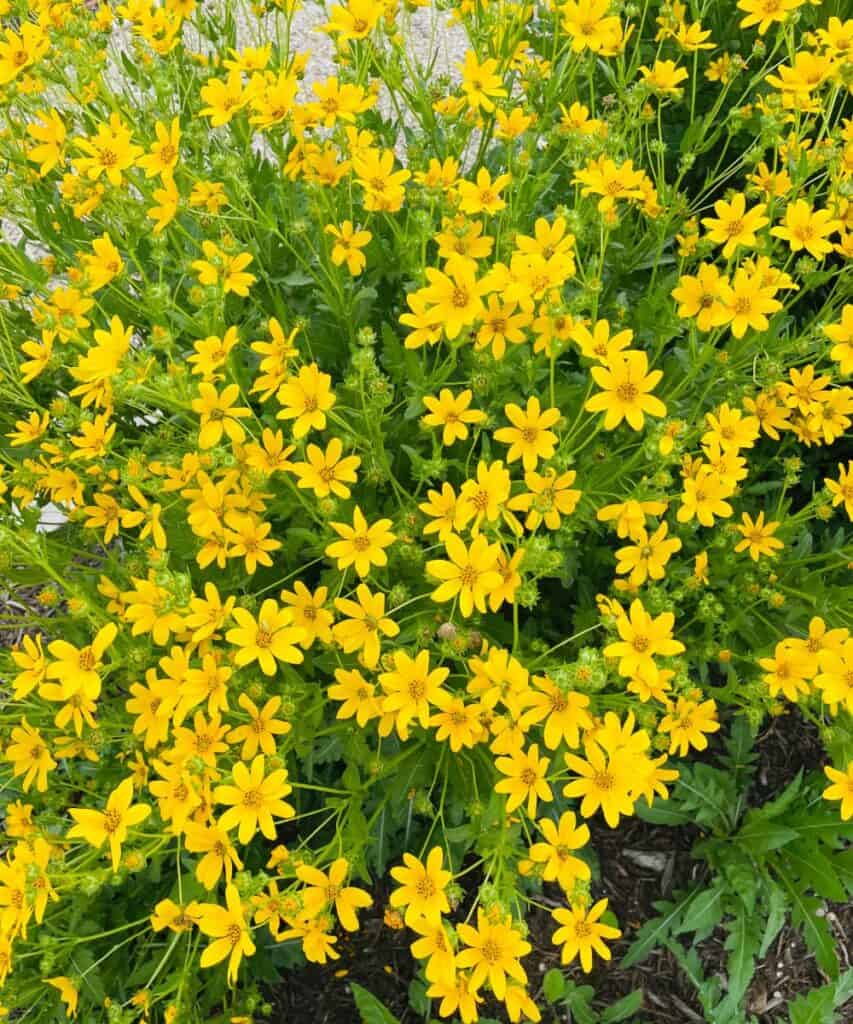
One of my favorite Texas native plants, Cutleaf Daisy has large, showy yellow flowers through spring and summer. It can handle full sun and intense heat, and is drought tolerant thanks to its deep taproot.
Want to grow native wildflowers at home? Then start by downloading this FREE 10 Texas Wildflowers PDF. It includes a photo of each along with growing info including bloom period and sun requirements.
5 Reasons to Grow Cutleaf Daisy
1) Bright yellow color makes a big impact
Cutleaf Daisy is the perfect addition to rock gardens and garden borders. Its bright yellow flowers atop long stalks make a bit statement.
This perennial thrives in full sun, but can also grow well in part shade. It just may not have as many blooms. It blooms heaviest in the late spring / early summer, but can produce another round of blooms if cut back in late summer.
Try paring it with Four Nerve Daisy (shown below) and other native yellow perennial flowers.
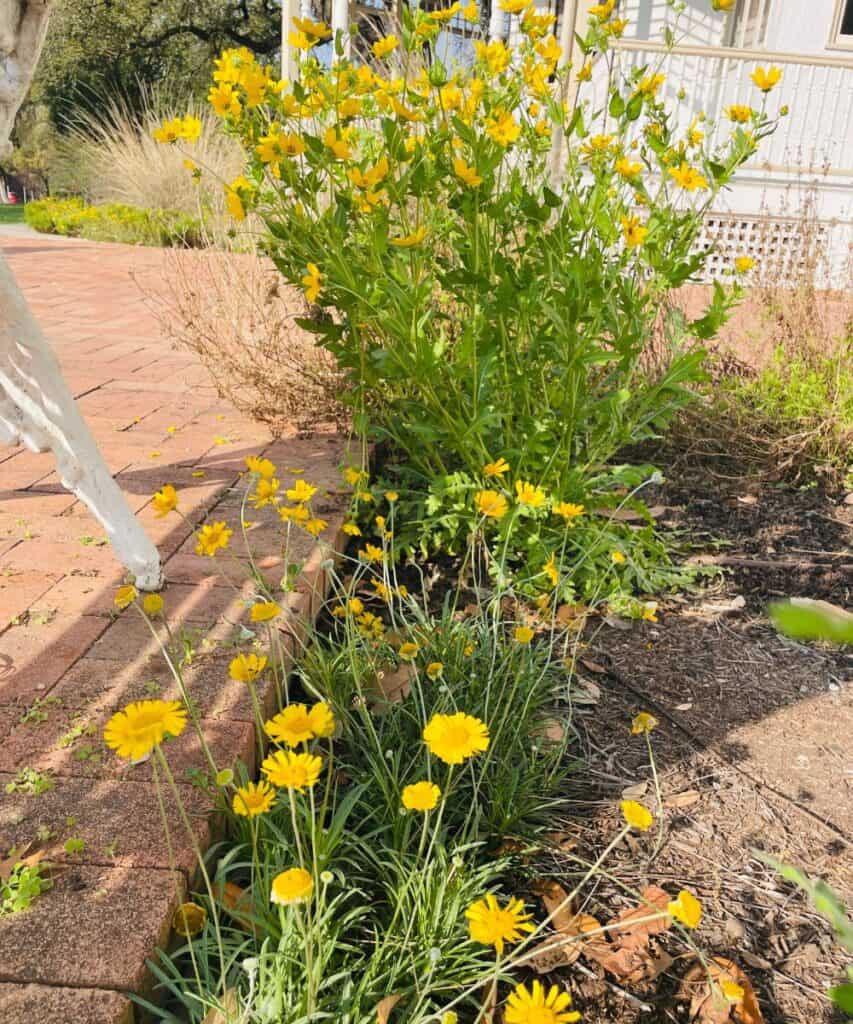
2) Drought-tolerant
Engelmann’s Daisy is a tough plant thanks to its deep taproot! It likes good drainage, thrives in a variety of soil types, and can handle drought conditions like a champ. Check out these other drought-tolerant Texas native plants.
3) Grows well in pots
I have grown Cutleaf Daisy in a patio pot for the last couple years. Its bottom leaves (called a basal rosette) stay evergreen throughout the year, making it look attractive even when not in bloom. Just make sure your pot has good drainage and it should do well!
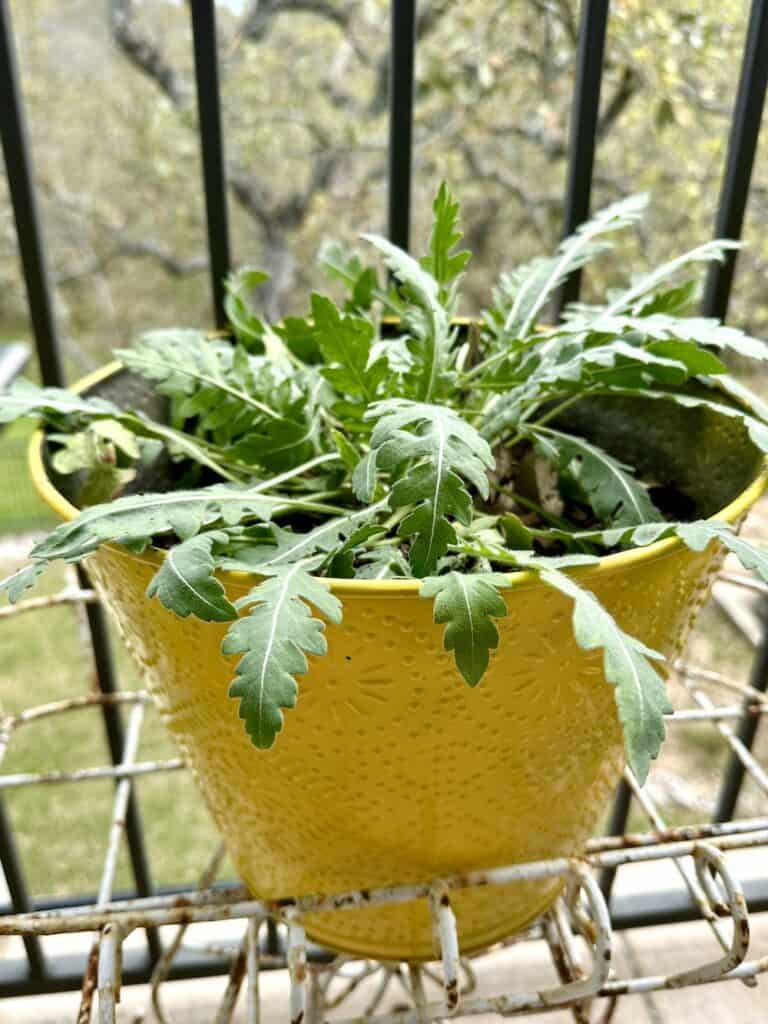
4) Perennial blooms
Engelmann’s Daisy is a great perennial option for a garden or wildflower meadow. Each plant will produce blooms for years to come. It will also reseed and spread over time with winter rains and favorable conditions.
5) Good wildlife plant
Culeaf Daisy, like many of our native plants, helps suppoert beneficial insects and birds. It provides nectar to pollinators and seeds for small birds like Lesser Goldfinches. However, deer love to eat it as well, so it is not deer resistant!
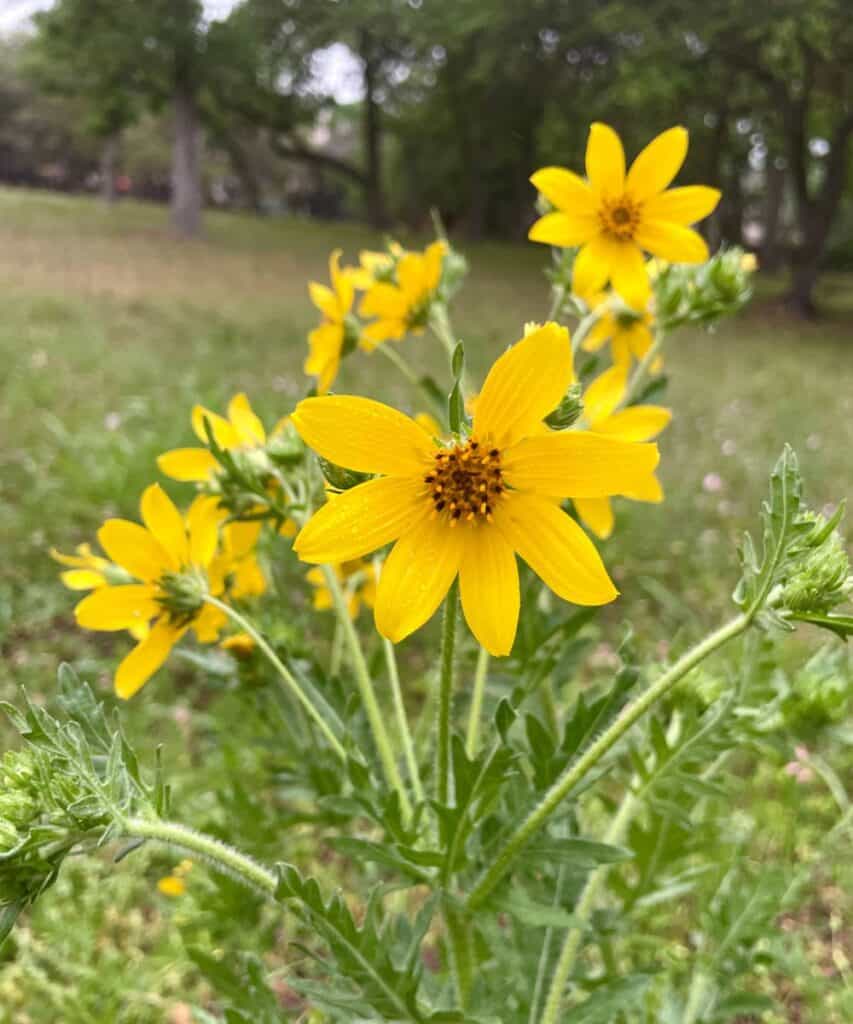
What does Cutleaf Daisy (Engelmannia peristenia) look like?
Cutleaf Daisy consists of ray flowers, each with 8-10 yellow rays. There are numerous long-stalked flower heads on a single plant. When the blooms fade the base of the plant remains as an evergreen wintering basal rosette. Check out this guide for identifying native wildflowers by their basal rosettes.
The name Cutleaf Daisy refers to its toothed leaves. Its scientific name Engelmannia peristenia was created for George Engelmann, a German-American physician and botanist who gathered and studied many plant specimens in North America in the mid 1800s.
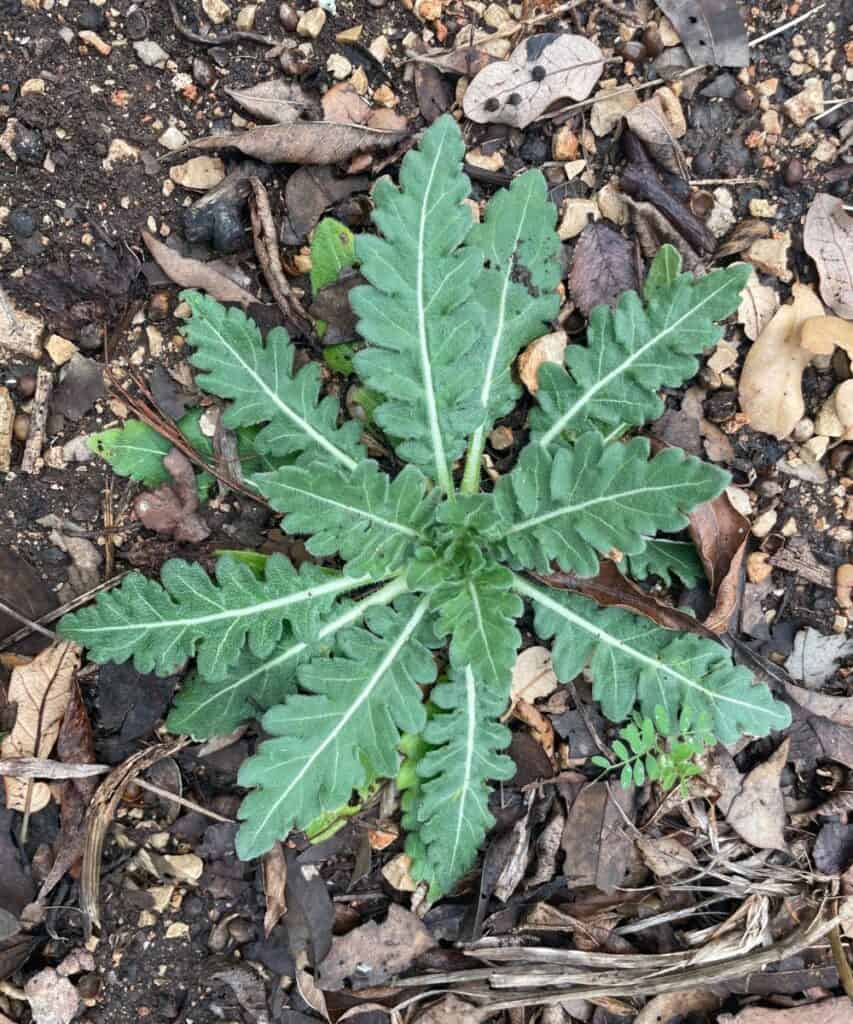
Where is Cutleaf Daisy (Engelmannia peristenia) native to?
The native distribution of this perennial flower extends throughout most of Texas, including the Edwards Plateau ecoregion where I live. Its native habitat includes grasslands in Oklahoma, Kansas, New Mexico, southern Colorado, and eastern Arizona.
Download the Free PDF: Texas Wildflowers
I created a handy one-page PDF for you to print out. It includes a thumbnail photo of each species of Texas wildflowers along with both its common and scientific name, sun requirements, and other helpful growing info. Get it here:

Save this post to Pinterest!
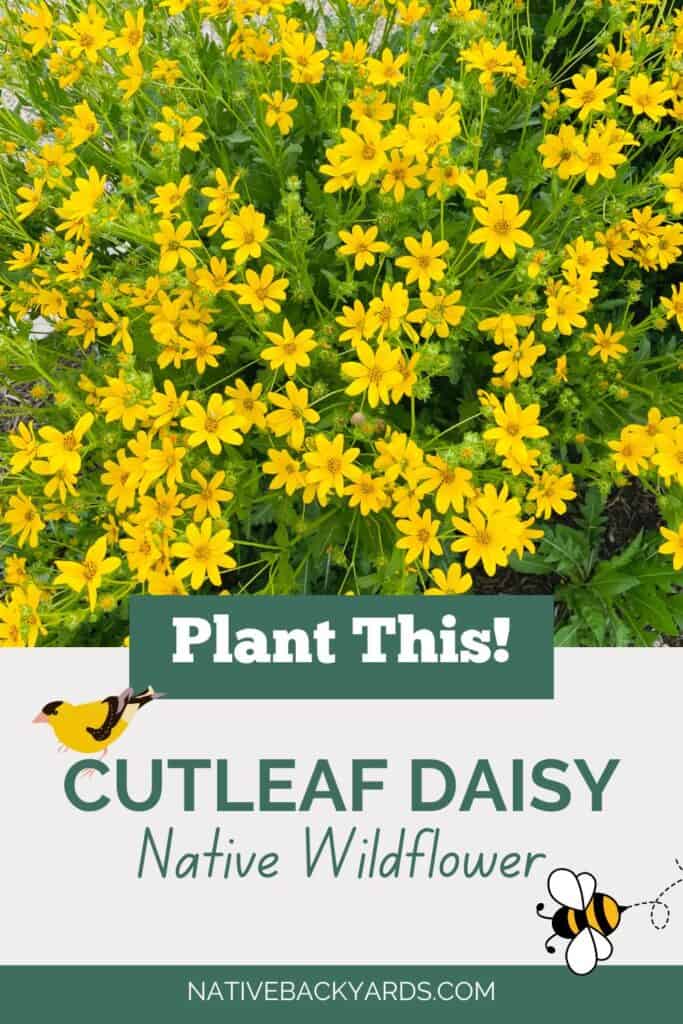
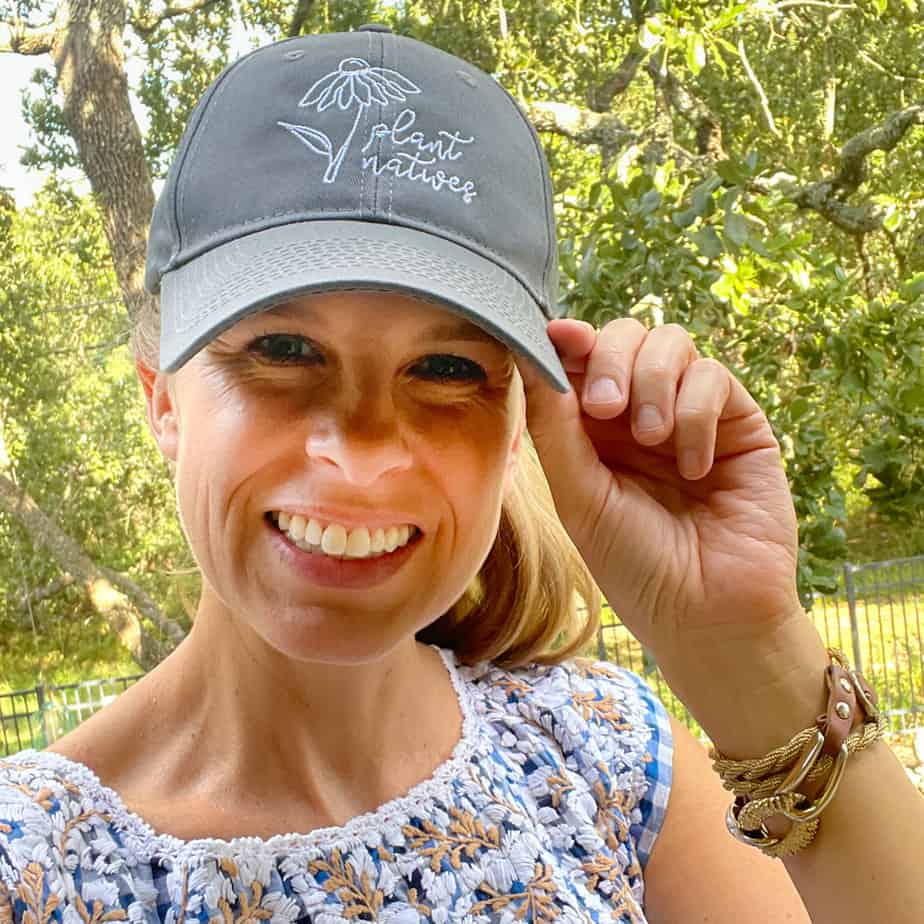
Welcome to Native Backyards! I’m Haeley from San Antonio, Texas, and I want to help you grow more native plants.
I have seen firsthand how the right plants can bring your yard to life with butterflies, bees, and birds. I’ve transformed my yard with Texas natives and I’m excited to share what I’ve learned with you.
Join my newsletter here! – each week I’ll send you helpful tips to make your native plant garden a reality!
Want to learn more about me and my garden? Check out my About page!

We are trying to ientify plants in our backyard-just moved to south austin. The plant we have is a single stem with branches-no flowers yet. Couls it be a cutleaf variant? Approximately, when will it flower ?
Thanks for your message! If you can send me a photo of your plant, I may be able to help you identify it! Cutleaf Daisy typically starts blooming in March or April.